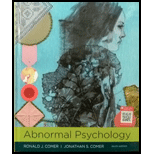
Introduction
Alcohol is a depressant which acts on the central nervous system causing the person to feel less inhibited and more relaxed. If consumed in large quantities, it can have detrimental effects on the physical and mental health. However, despite being potentially dangerous, alcohol is legal in many places all over the world.
Explanation of Solution
Suggested response
Alcohol is used as a means to socialize, celebrate, and feel good. However, excessive use of alcohol is linked with a number of physical and psychological problems. Despite this, alcohol is legal in many parts of the world. One consideration might be that fermented alcoholic drinks were consumed by people of different cultures and communities in the past, and are still being consumed all around the world. In this way, drinking is seen as socially acceptable. Since there are many people all around the world who like to drink alcohol, it is least likely to be banned. Banning might lead people to seek alcohol through wrong or illegal means and might put people's health at risk because of the illegal selling of unhealthy or low-priced priced alcoholic drinks. Therefore, the law supports the consumption of alcohol, but has laid down laws regarding the appropriate drinking age.
Want to see more full solutions like this?
Chapter 12 Solutions
Abnormal Psychology
- Create a post of 150 words reflecting on the items below. Instructions: Begin by reflecting on your own experiences with music technology, including how you discover new music, your preferred listening platforms, and any notable changes in your music consumption habits over time. Discuss the impact of streaming services like Spotify, Apple Music, and YouTube on music accessibility and the way artists distribute and monetize their work. Explore the role of algorithms and personalized recommendations in shaping music discovery. How do these algorithms impact the diversity of music we encounter, and are there potential drawbacks to algorithm-driven content curation? Consider the benefits and challenges of digital music production tools for artists. How has technology democratized music creation, and what new possibilities does it offer for artistic expression?arrow_forwardHi with this unit/ assessment PSY4406 TP4 Report assessment material case stydu Ms Alecia Moore. in the Assessment tool 2 - Trait emotional intelliegence can you provied the results for the test, and the test results for Assessment 3 - Mini International personality item pool. https://www.bartleby.com/docs/psychology/4369920 thanl you, your response is greatly appricatedarrow_forwardWhat are the expectations going into the internship with high school student beahavoir?arrow_forward
- Write a 1,200-1,500-word analysis that describes the characteristics and roles you hope to embody as a counselor and the counselor dispositions that you want to bring with you. You may write in the first person for this assignment. Include the following in your analysis: Your role as a clinical mental health counselor or school counselor in the agency, school, and/or community you serve. Include strategies for collaborating and consulting with behavioral health care professionals. Refer to the importance of certification and licensure related to your role and professional identity. Strategies to develop a counselor identity that fosters leadership, advocacy and provides services as a licensed professional counselor or school counselor for persons with mental health issues. Depending on your program of study, refer to the GCU "SC Professional Dispositions of Learners" or the GCU "Counselor Dispositions" located in the Class Resources when completing this assignment. Consider your…arrow_forwardwhat makes yoruba different from other religions or culturesarrow_forwardWhat does the PIC/NIC Analysis focus on from the Performer's Perspective? Consequences Antecedents Behavior X Behavior Yarrow_forward
- What does the PIC/NIC Analysis focus on from the Performer's Perspective? Consequences Antecedents Behavior X Behavior Yarrow_forwardThe Performance Diagnostic Checklist-Human Services (PDC-HS) is an assessment tool to identify areas of improvement for employee performance within a work environment. For this task, you can complete the PDC-HS as a self-assessment within your work requirements or you can interview a colleague. Describe the performance concernarrow_forwardWhat are three methods for dissemination of information that school counselors can use after watching the YouTube video titled: “Self-care for school counselors” (https://www.youtube.com/watch?v=hvQyjEh1Lmk) by CSCA Executive Director (2020, April 2)? Please write in a narrative format and include citations and references.arrow_forward
- What are the three most relevant principles school counselors need to be aware of watching the YouTube video titled: “Self-care for school counselors” (https://www.youtube.com/watch?v=hvQyjEh1Lmk) by CSCA Executive Director (2020, April 2))? Please write in a narrative format and include citations and references.arrow_forwardWhat are three interventions or programs school counselors can implement in schools after watching the YouTube video titled: “Self-care for school counselors” (https://www.youtube.com/watch?v=hvQyjEh1Lmk) by CSCA Executive Director (2020, April 2))? Please write in a narrative format and include citations and references.arrow_forwardWhat are three professional best practices that school counselors can implement or can recommend in schools after watching the YouTube video titled: “Self-care for school counselors” (https://www.youtube.com/watch?v=hvQyjEh1Lmk) by CSCA Executive Director (2020, April 2))? Please write in a narrative format and include citations and references.arrow_forward
 Ciccarelli: Psychology_5 (5th Edition)PsychologyISBN:9780134477961Author:Saundra K. Ciccarelli, J. Noland WhitePublisher:PEARSON
Ciccarelli: Psychology_5 (5th Edition)PsychologyISBN:9780134477961Author:Saundra K. Ciccarelli, J. Noland WhitePublisher:PEARSON Cognitive PsychologyPsychologyISBN:9781337408271Author:Goldstein, E. Bruce.Publisher:Cengage Learning,
Cognitive PsychologyPsychologyISBN:9781337408271Author:Goldstein, E. Bruce.Publisher:Cengage Learning, Introduction to Psychology: Gateways to Mind and ...PsychologyISBN:9781337565691Author:Dennis Coon, John O. Mitterer, Tanya S. MartiniPublisher:Cengage Learning
Introduction to Psychology: Gateways to Mind and ...PsychologyISBN:9781337565691Author:Dennis Coon, John O. Mitterer, Tanya S. MartiniPublisher:Cengage Learning Psychology in Your Life (Second Edition)PsychologyISBN:9780393265156Author:Sarah Grison, Michael GazzanigaPublisher:W. W. Norton & Company
Psychology in Your Life (Second Edition)PsychologyISBN:9780393265156Author:Sarah Grison, Michael GazzanigaPublisher:W. W. Norton & Company Cognitive Psychology: Connecting Mind, Research a...PsychologyISBN:9781285763880Author:E. Bruce GoldsteinPublisher:Cengage Learning
Cognitive Psychology: Connecting Mind, Research a...PsychologyISBN:9781285763880Author:E. Bruce GoldsteinPublisher:Cengage Learning Theories of Personality (MindTap Course List)PsychologyISBN:9781305652958Author:Duane P. Schultz, Sydney Ellen SchultzPublisher:Cengage Learning
Theories of Personality (MindTap Course List)PsychologyISBN:9781305652958Author:Duane P. Schultz, Sydney Ellen SchultzPublisher:Cengage Learning





